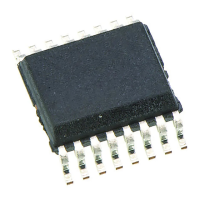RL78/G10 CHAPTER 6 TIMER ARRAY UNIT
R01UH0384EJ0311 Rev. 3.11 106
Dec 22, 2016
6.1.2 Simultaneous channel operation function
By using the combination of a master channel (a reference timer mainly controlling the cycle) and a slave channel (a
timer operating according to the master channel), channels can be used for the following purposes.
(1) One-shot pulse output
Two channels are used as a set to generate a one-shot pulse with a specified output timing and a specified pulse
width.
Timer output
(TO0p)
Interrupt request signal
(INTTM0n)
Edge detection
Timer input
(TI0n)
Set
(Master)
Output
timing
Pulse width
Start
(Master)
Reset
(Slave)
Channel n (master)
Channel p (slave)
Compare operation
Compare operation
(2) Two-channel input with one-shot pulse output function (16-pin products only)
Two channels are used as a set to generate any one-shot pulse by setting or resetting the timer output pin (TO03)
at a valid edge of the timer input pin (TI0n, TI03) input.
Timer output
(T
O03)
Interrupt request signal
(INTTM0n)
Timer input
(TI0n)
Set
(INTTM0n)
Output
timing
Start
(TI0n edge detection)
Reset
(TI03 edge detection)
Channel n (master)
Channel 3 (slave)
Compare operation
Compare operation
Timer input
(TI03)
Caution There are several rules for using the simultaneous channel operation function.
For details, see 6.4.1 Basic rules of simultaneous channel operation function.
Remark n: Channel number
n = 0 (for 10-pin products); n = 0, 2 (for 16-pin products)
p: Slave channel number (0 < p ≤ 3)

